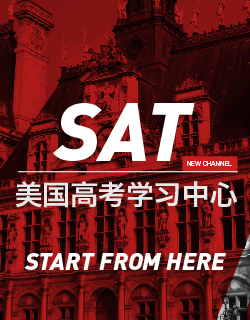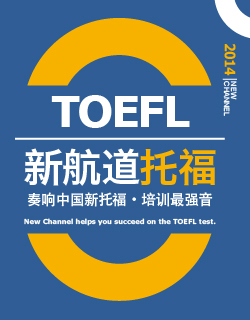托福TPO听力37题目+答案+MP3音频下载
托福TPO听力文本暂无,后期有了,会补上!以下是托福TPO听力37题目+答案!由于本站不能上传附件,需要托福TPO37听力音频文件的同学,请到文章结尾处提交表单,我们会在15小时内发给你!
Conversation 1
1.Why does the student go to see the professor
A To request extra time to complete an assignment
B To explain why she will miss the next class
C To clarify the requirements of a class assignment
D To discuss the results of a lab experiment
2.What does the professor imply about the student's extended field trip
A He would like to know more about the fieldwork the student did.
B He was unaware of the problems the student had on the trip.
C He knew that there would be problems on the trip.
D He has been in similar situations himself.
3.What fact from the radio interview with an ecologist surprised the student
A Global warming may be less harmful to biodiversity than oil palm cultivation.
B Global warming may have benefited some species of butterflies.
C Oil palm cultivation has contributed greatly to global warming.
D Oil palm tree populations have suffered as a result of global warming.
4.What advantages of the oil palm do the speakers mention
Click on 3 answers.
A It resists damage from imported insects.
B It is an easy crop to grow.
C It creates a habitat for rare animal species.
D It is used in a wide range of products.
E It has a positive impact on communities where it is grown.
5.Why does the professor tell the student about the importation of cane toads to Australia
A To remind the student of a topic she studied last semester
B To provide an example of a concept he is describing
C To explain the purpose of the lab assignment the student will work on
D To amuse the student with an anecdote from his own student days
Lecture1
6.Why does the professor compare isotopes to fingerprints
A To provide support for an argument
B To clarify a difficult concept
C To identify a problem with the research study
D To suggest a way to test a theory
7.What point does the professor emphasize about the region examined in the study he describes
A Its steep mountainous position exaggerates the effects of water flow there.
B Its dry climate limits how much information it can yield about water movement.
C Its rainfall patterns and soil conditions are not typical of conditions in all regions.
D Its soil absorbs water at a much greater rate than soil in a more temperate climate.
8.What did the researchers discover about small soil pores
A Small pores make the movement of water through soil difficult to trace.
B The number of small pores in the soil of a specific area is related to the number of hydrogen isotopes there
C Trees receive less water from small pores than from large pores.
D Small pores retain water longer than previously thought.
9. In the soil examined by the researchers, what happens to rainwater that falls toward the end of the rainy season
A Most of it moves through the soil to nearby streams.
B Most of it is absorbed by trees.
C It is more likely to pick up pollutants underground.
D Researchers have been unable to track its entire path.
10.What is the professor's opinion about the research findings
A The findings provided valuable insights for a research study he conducted.
B The findings support a different conclusion than the one the researchers have drawn.
C The findings will have an impact on other fields of research.
D The findings are not conclusive because the movement of pollutants was not tracked.
11.What is the main purpose of the lecture
A To point out the flaws in a newly proposed theory
B To describe a new understanding of a basic process in soil hydrology
C To address concerns about using stable isotope analysis
D To provide an explanation of a study described in the class's textbook
Lecture 2
12.What is the purpose of the lecture
A To review important concepts from a previous class
B To provide some background for a painting the class will be discussing
C To compare two styles of painting
D To prepare students for an upcoming project
13.Why does the professor mention books and a map
A To give examples of objects that are not typically used in still-life paintings
B To give examples of elements of still-life paintings used in other genres of painting
C To explain what inspired him to create a still-life painting at university
D To explain why still-life paintings are often studied in beginning art classes
14.According to the professor, why did artists like James Peale adopt a scientific approach to still- life painting
A Their paintings were used to illustrate scientific journals.
B They had studied science at university before becoming artists.
C They were interested in exploring the natural world through their art.
D They were interested in experimenting with nuances of color.
15.Why does the professor tell the story about his own painting of some vegetables
A To emphasize the importance of planning the composition of a still-life painting
B To encourage the use of a variety of objects in a still-life painting
C To capture the attention of students who are not interested in still-life paintings
D To reassure the students that still-life paintings are not difficult to execute
16.What point does the professor make about negative space in still-life paintings
A It is overused in many still-life paintings.
B It contributes to the balance in the composition of a still-life painting.
C It often causes still-life paintings to look deliberately planned.
D It may detract from the simplicity of the composition of a still-life painting
17.Why does the professor say this:
A To clarify the first step of painting a still life
B To explain why he decided to become a still-life artist
C To introduce a painting he is going to describe
D To convince students that painting a still life can be rewarding
答案:
1.B
2.B
3.A
4.BDE
5.B
6.B
7.A
8.D
9.A
10.C
11.B
12.D
13.B
14.C
15.A
16.D
17.A
Conversation 2
1.What are the speakers mainly discussing?
A A point about southern settlements that the student did not understand.
B A problem with an assignment on colonial shipping routes.
C Reasons why the student prefers to write a paper relates to architecture.
D An aspect of colonial settlements the students wants to research.
2.What is the professor’s opinion about the student’s interest in architecture?
A He thinks the student’s focus on architecture prevents her from broadening her perspective.
B He thinks it may contribute to her producing an interesting research paper.
C He hopes she will choose to major in both history and architecture.
D He suspects that it may not provide her with the necessary background for the paper she is writing
3.What does the professor want the student to do when they write their papers?
A Show a connection between history and another field in which they are interested.
B Develop a research topic that has not been investigated before.
C Explain how an aspect of United States culture has changed over time.
D Describe early difference between regions of the United States.
4.Why does the professor mention medieval Europe?
A To point out an important difference Europe and the United States.
B To introduce a reason that the first European settlers moved to North American.
C To indicate the Style of community planning followed by in the northern colonies.
D To point out that urban planning has changed considerably since the medieval period.
5.What does the professor imply about storage and port facilities?
A They were one indicator of the emphasis put on trade in the southern colonies.
B They were a sign of something the northern and southern colonies had in common
C They were multipurpose facilities also used for community meetings.
D They were designed to be similar to those found in Europe.
Lecture3
6.What is the lecture mainly about
A A new approach to ensuring the survival of a forest ecosystem
B Similarities between desert and forest-stream ecosystems
C Interactions that take place within a North American forest ecosystem
D Factors that have contributed to the preservation of salmon populations in forest ecosystems
7. Why does the professor mention ants and rodents competing for food
A To make sure the students understand the different components of an ecosystem
B To point out the limited resources available to organisms in a desert ecosystem
C To illustrate how different species adapt to extreme temperatures
D To provide an example of an easily understood interaction within an ecosystem
8.According to the professor, how do trees contribute to the successful spawning of salmon
A They provide streams with nutrients that the salmon need.
B They provide shade that keeps streams sufficiently cool.
C They help salmon avoid predators by providing camouflage.
D They reduce the amount of sediment entering streambeds.
9.What point does the professor make about bears carrying salmon away from streams
Click on 2 answers.
A It results in bears eating fewer fish.
B It reduces the amount of food available to scavengers.
C It improves the health of the surrounding trees.
D It improves the water quality of the streams.
10.What does the professor imply about overfishing
A It is one of several reasons that the bear population has declined.
B It is difficult to prevent in both oceans and streams.
C It cannot be the sole focus for those working to prevent salmon depletion.
D Its impact is minor compared to the problems caused by logging.
11.Why does one of the students say this:
A To provide support for a hypothesis mentioned by the professor
B To suggest that a bear behavior mentioned by the professor seems improbable
C To explain why confrontations take place between bears
D To explain why bears eat so much in a short time span
Lecture 4
12.What is the lecture mainly about?
A Reasons why an ancient archaeological site was well preserved
B A controversy over where horses were first domesticated.
C Factors that led an ancient society to become nomadic.
D Evidence that an ancient civilization used domesticated animals
13.Why does the professor mention milking a wild horse?
A To point that the Botai people sometimes did not have enough food.
B To compare the physical features of domesticated and wild horse.
C To prove that the horses of the Botai people were domesticated.
D To emphasize that horse milk was popular in some ancient societies.
14.What point does the professor make the horse bones found in the Botai settlements?
A They do not reveal information about horse domestication.
B They are very different from the bones of modern horses.
C They date to the period when the Botai people had become nomads.
D They suggested that horses were first domesticated by another ancient people.
15.According to the professor, what can a large concentration of phosphorus in the soil indicate?
A That a large number of horses were kept in the area.
B That the diet of people who lived in the area included horse milk.
C That there were well-used fireplaces in the area.
D That farming in that soil would have been extremely difficult.
16.What does the professor imply about the people in ancient Kazakhstan when they started raising sheep and cattle?
Click on 2 answers.
A They found a way to protect livestock from harsh weather without travelling to the southern region.
B They realized that a nomadic lifestyle offered benefits that outweighed the hard work.
C They had to learn the area due to a rapid increase in population.
D They learned that growing crops is possible in the southern regions.
17.Why does the student say this?
A To point a contradiction in the professor’s remark.
B To propose a solution to the issue that the professor has just discussed.
C To find out if he understands correctly what the professor has just explained
D To show that he disagrees with the professor.
答案:
1.D
2.B
3.D
4.C
5.A
6.C
7.D
8.BD
9.AC
10.C
11.B
12.C
13.A
14.A
15.C
16.B
17.C
上海新航道整理!由于音频文件不便上传,想要托福TPO37听力题目+答案+MP3音频下载的同学,请提交“姓名+电话+邮箱”,我们将于15个小时内发送给您!
更多托福TPO大全 查看,请点击:http://www.shxhd.cn/tpo/







